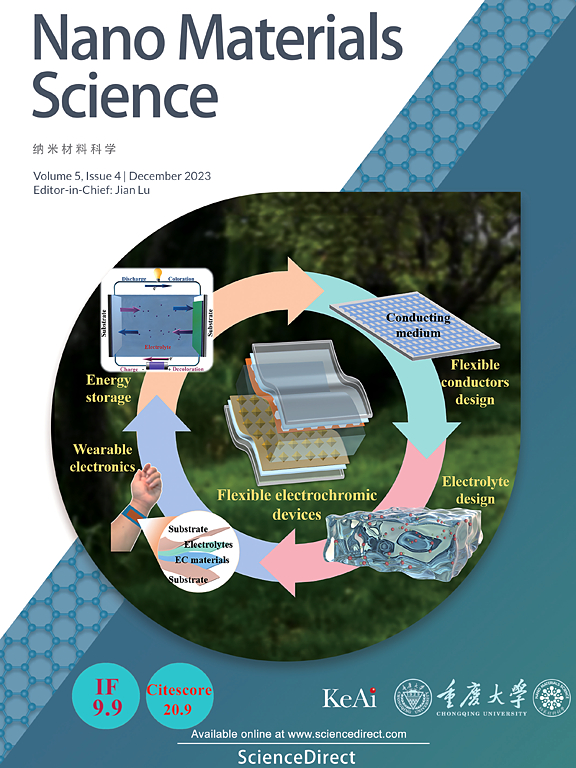An overview of recent progress in the development of flexible electrochromic devices
IF 9.9
2区 材料科学
Q1 Engineering
引用次数: 0
Abstract
Electrochromic materials are capable of reversibly switching their colors or optical properties through redox reactions under applied voltages, which have shown great potential applications including smart windows, non-emissive displays, optical filters, among others. Although the current rigid electrochromic devices have shown emerging interest and developed rapidly, many applications (e.g., wearable/deformable optoelectronics) are blocked due to their inflexible features. Herein, the adaption of rigid electrochromic devices to flexible ones is of particular interest for the new era of smart optoelectronics. In this review, the current state-of-the-art achievements of flexible electrochromic devices (FECDs) are highlighted, along with their design strategies and the choice of electrochromic materials. The recent research progress of FECDs is reviewed in detail, and the challenges and corresponding solutions for real-world applications of FECDs are discussed. Furthermore, we summarize the basic fabrication strategies of FECDs and their potential applications. In addition, the development trend, the perspectives, and the outlook of FECDs are discussed at the end of this Review, which may provide recommendations and potential directions to advance the practical applications of FECDs.
柔性电致变色器件的发展综述
电致变色材料能够在外加电压下通过氧化还原反应可逆地改变其颜色或光学性质,在智能窗口、非发射显示器、光学滤光片等方面显示出巨大的应用潜力。尽管目前的刚性电致变色器件已显示出新兴的兴趣并迅速发展,但由于其不灵活的特点,许多应用(例如,可穿戴/可变形光电子学)受到阻碍。在此,将刚性电致变色器件适应柔性电致变色器件对于智能光电子学的新时代具有特别的意义。本文综述了柔性电致变色器件(fecd)的最新研究成果,以及它们的设计策略和电致变色材料的选择。详细介绍了近年来fecd的研究进展,并讨论了fecd在实际应用中面临的挑战和相应的解决方案。此外,我们还总结了fecd的基本制作策略及其潜在的应用前景。最后,对其发展趋势、前景和展望进行了讨论,为进一步推进其实际应用提供了建议和可能的方向。
本文章由计算机程序翻译,如有差异,请以英文原文为准。
求助全文
约1分钟内获得全文
求助全文
来源期刊

Nano Materials Science
Engineering-Mechanics of Materials
CiteScore
20.90
自引率
3.00%
发文量
294
审稿时长
9 weeks
期刊介绍:
Nano Materials Science (NMS) is an international and interdisciplinary, open access, scholarly journal. NMS publishes peer-reviewed original articles and reviews on nanoscale material science and nanometer devices, with topics encompassing preparation and processing; high-throughput characterization; material performance evaluation and application of material characteristics such as the microstructure and properties of one-dimensional, two-dimensional, and three-dimensional nanostructured and nanofunctional materials; design, preparation, and processing techniques; and performance evaluation technology and nanometer device applications.
 求助内容:
求助内容: 应助结果提醒方式:
应助结果提醒方式:


